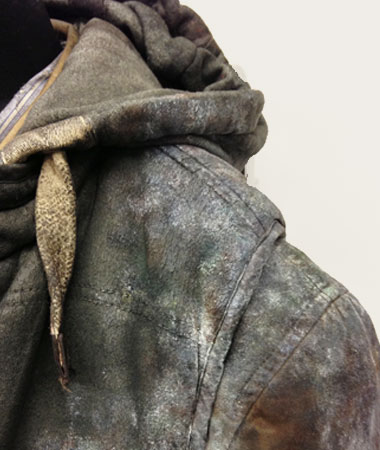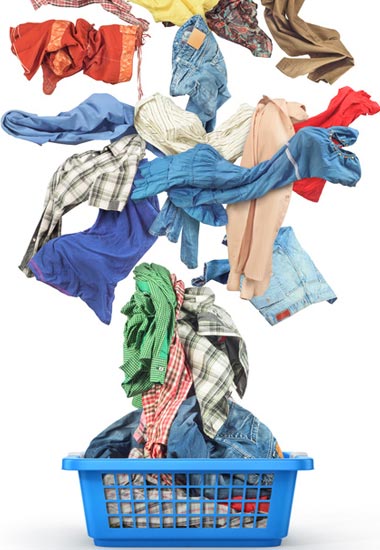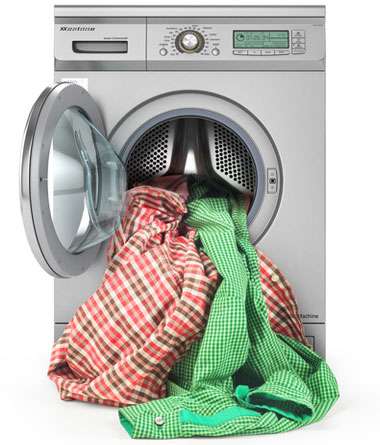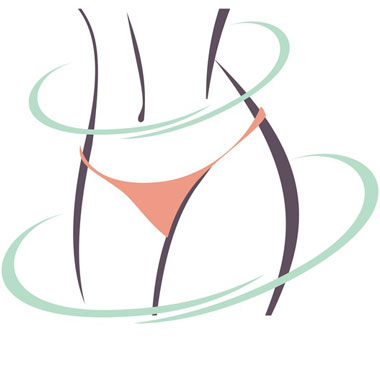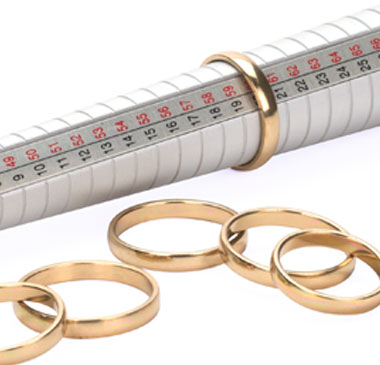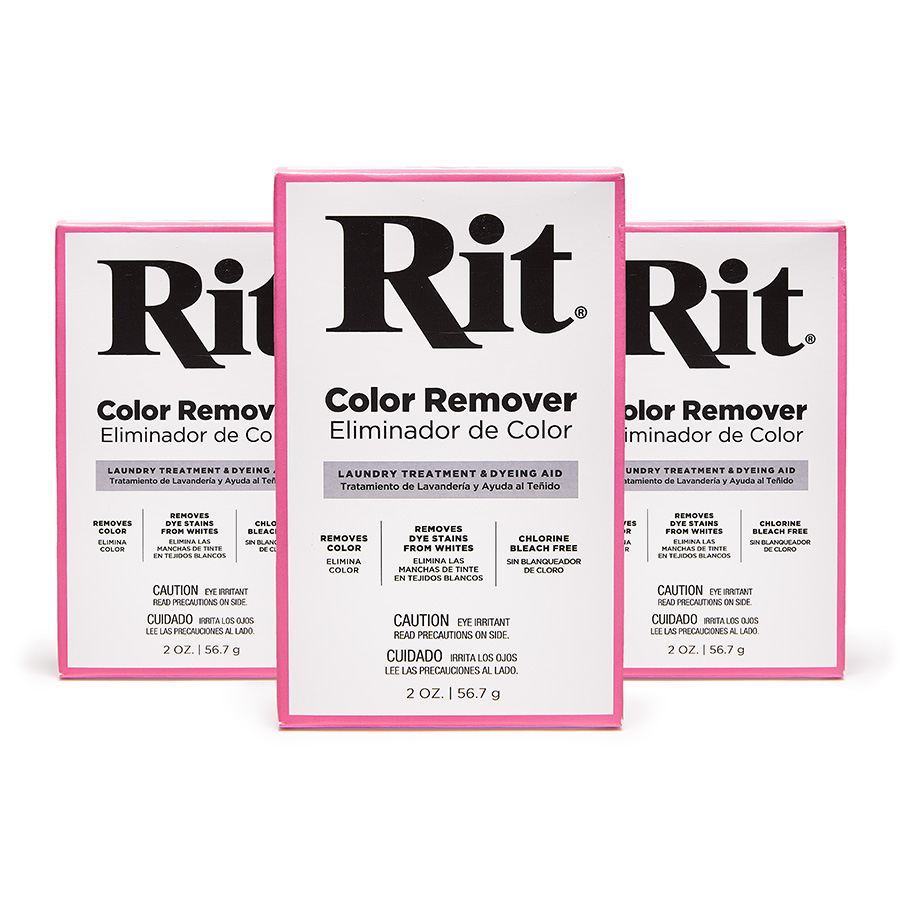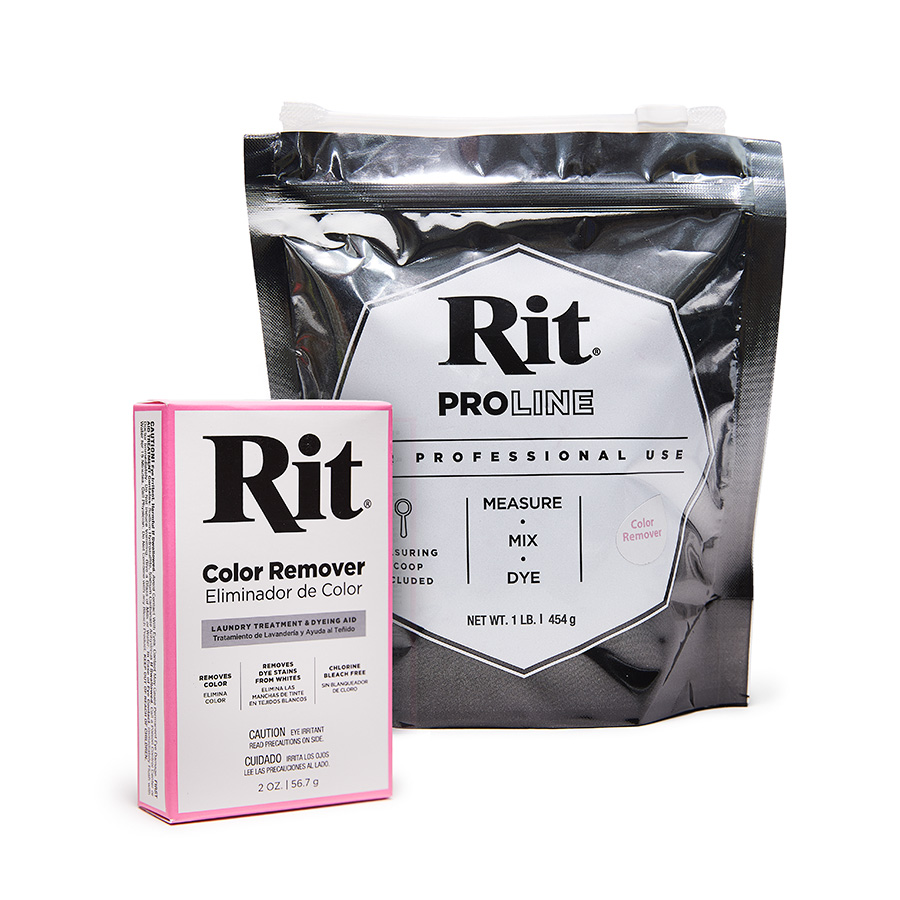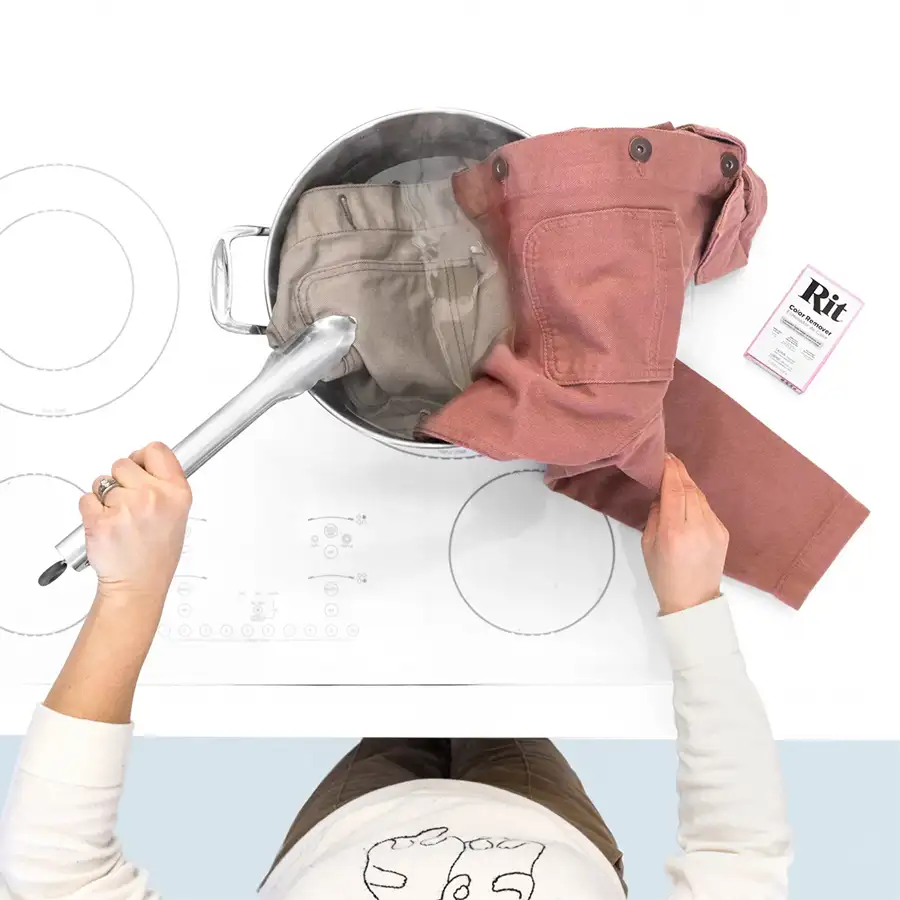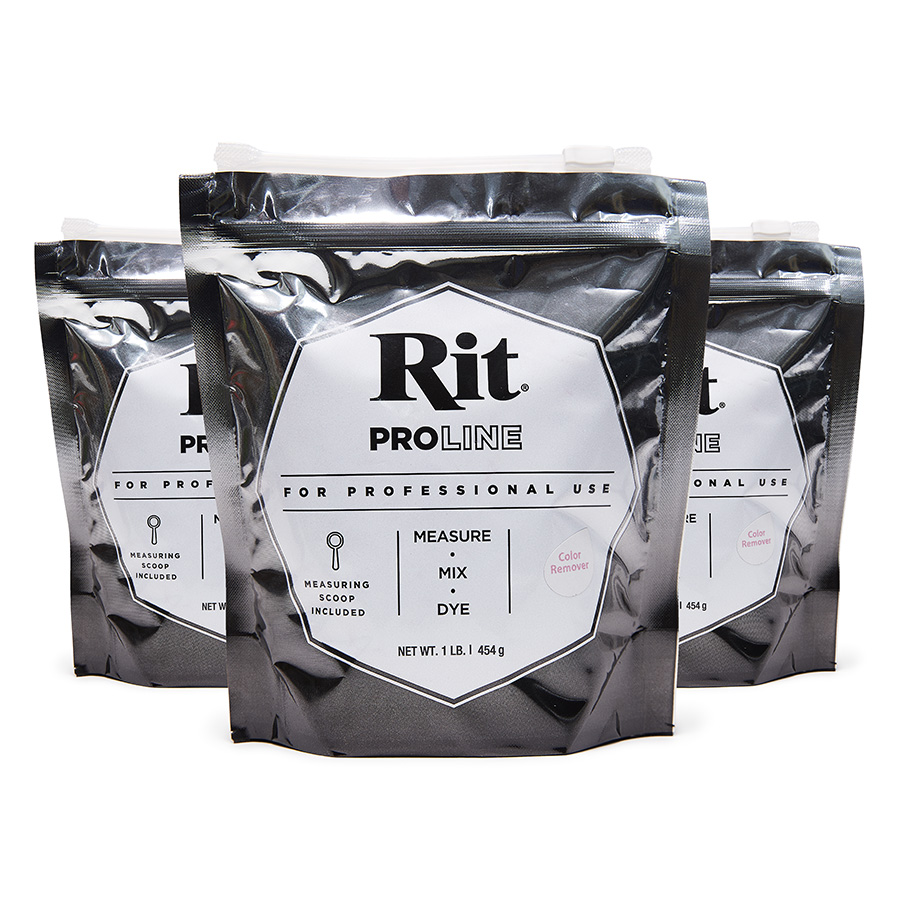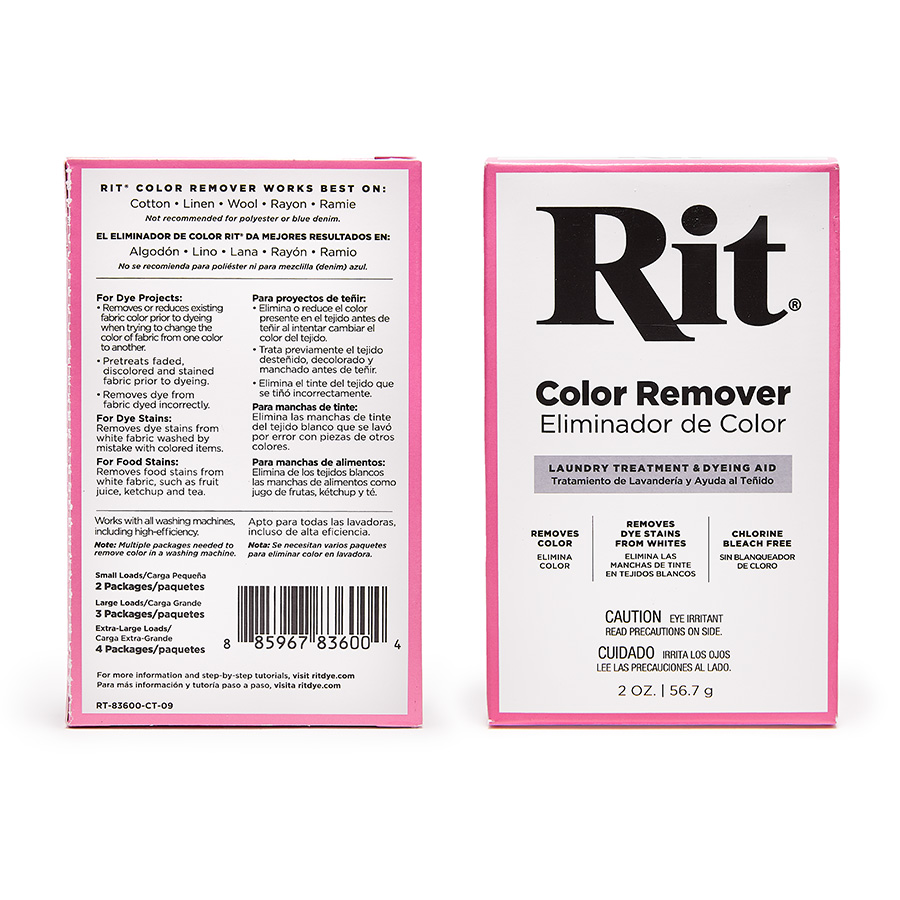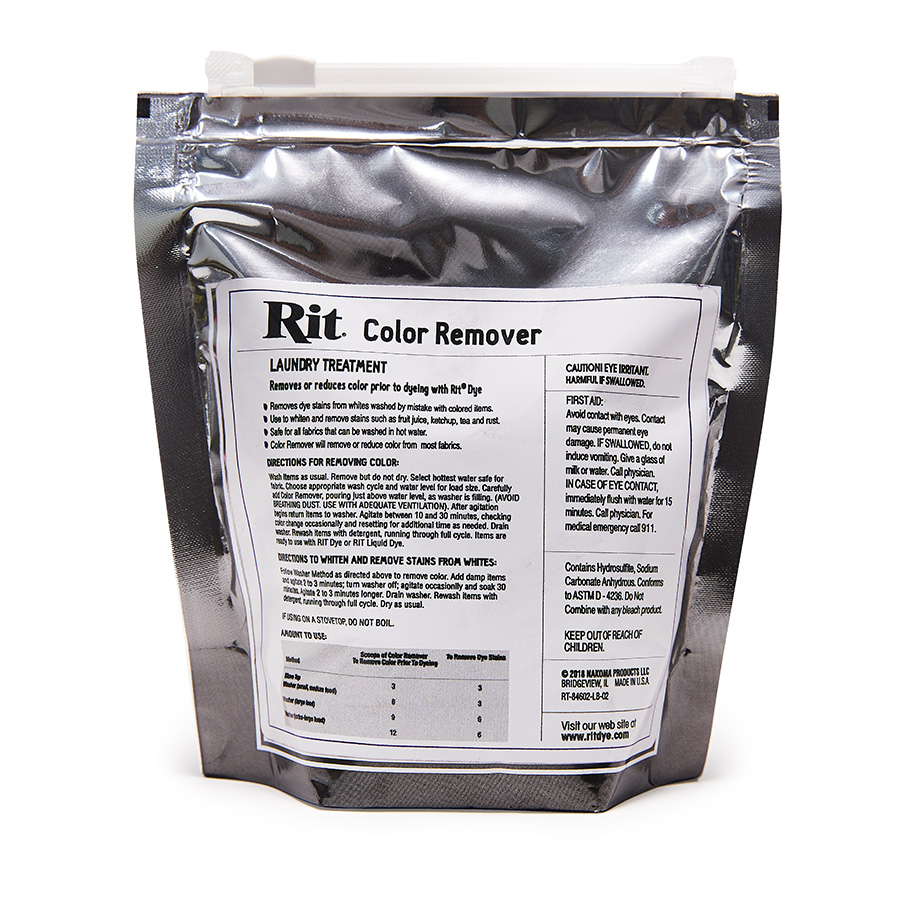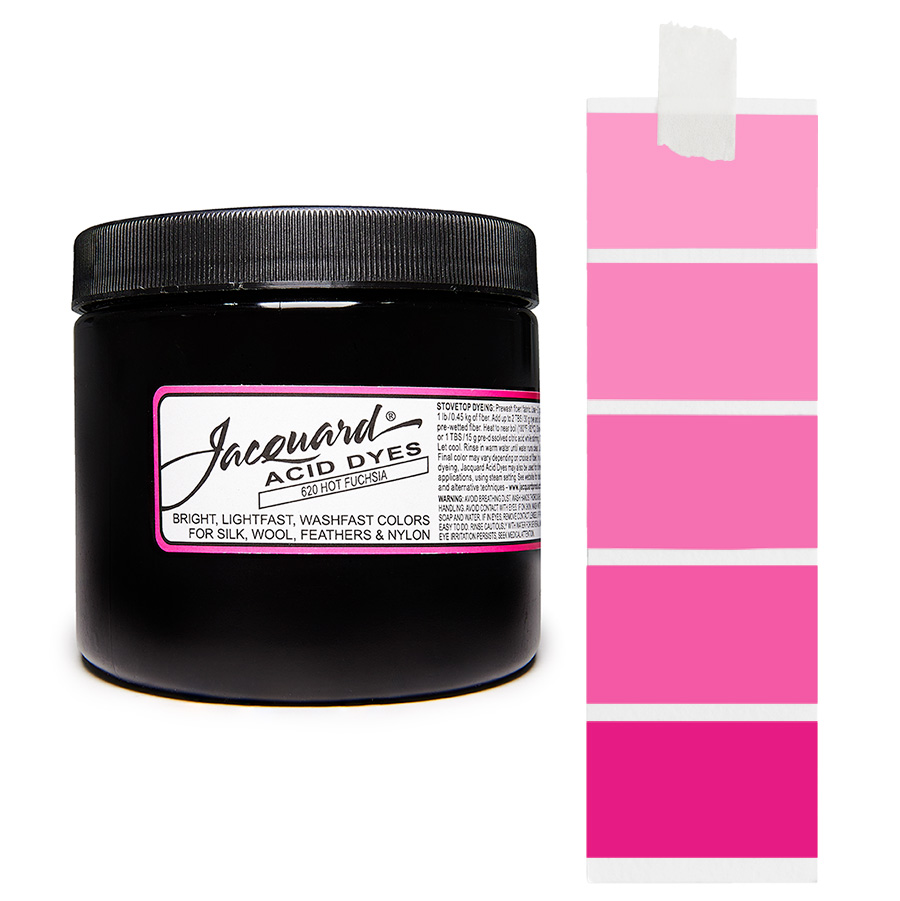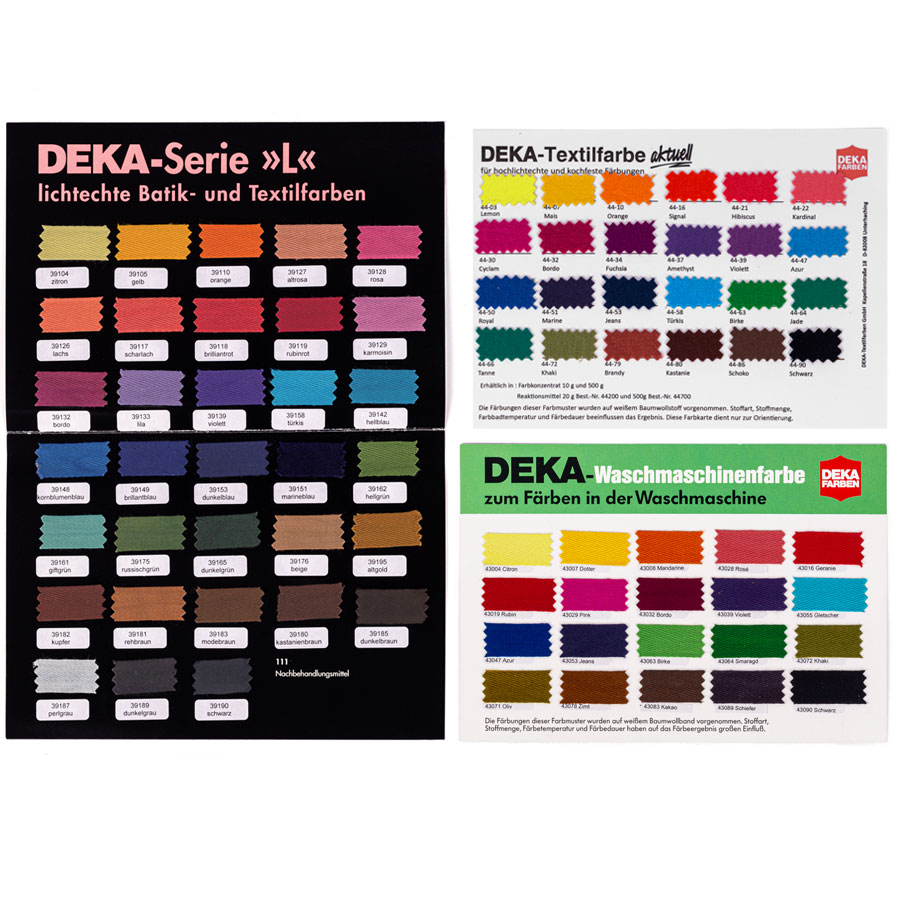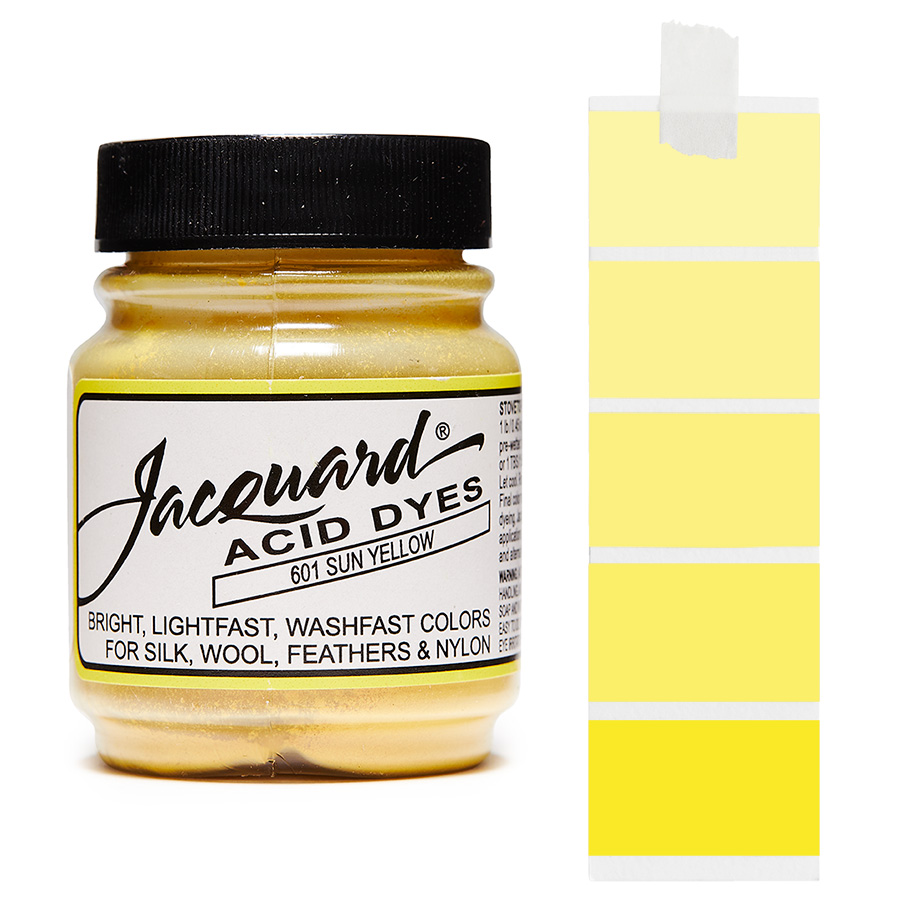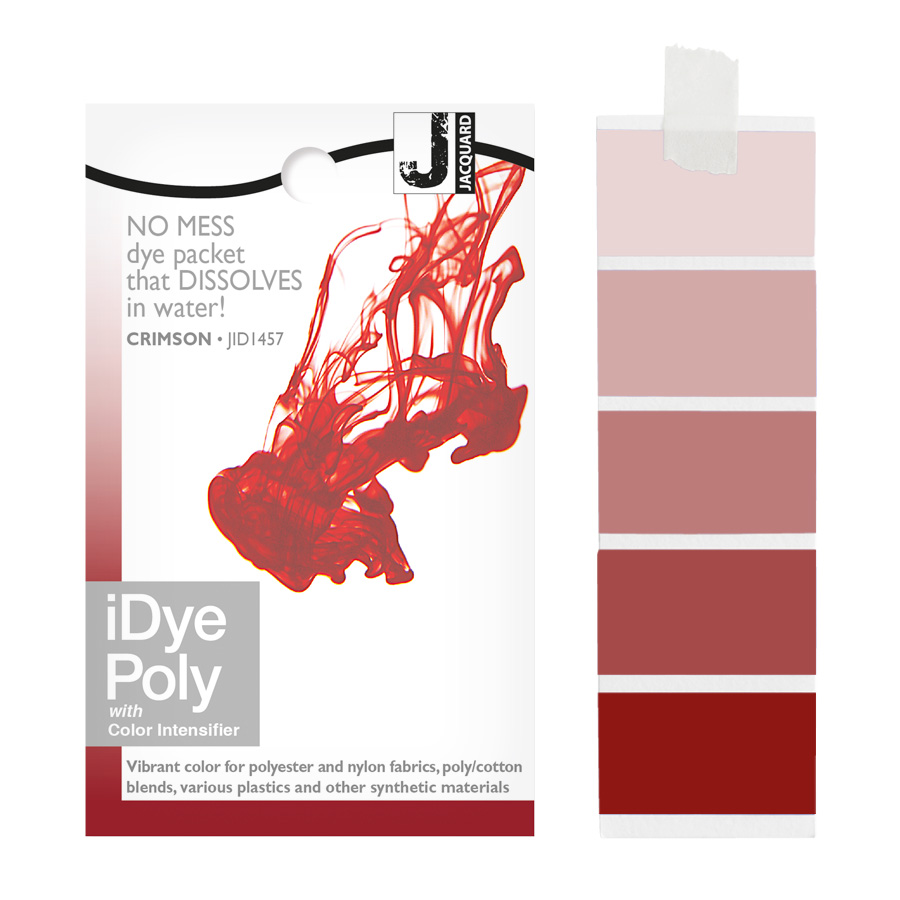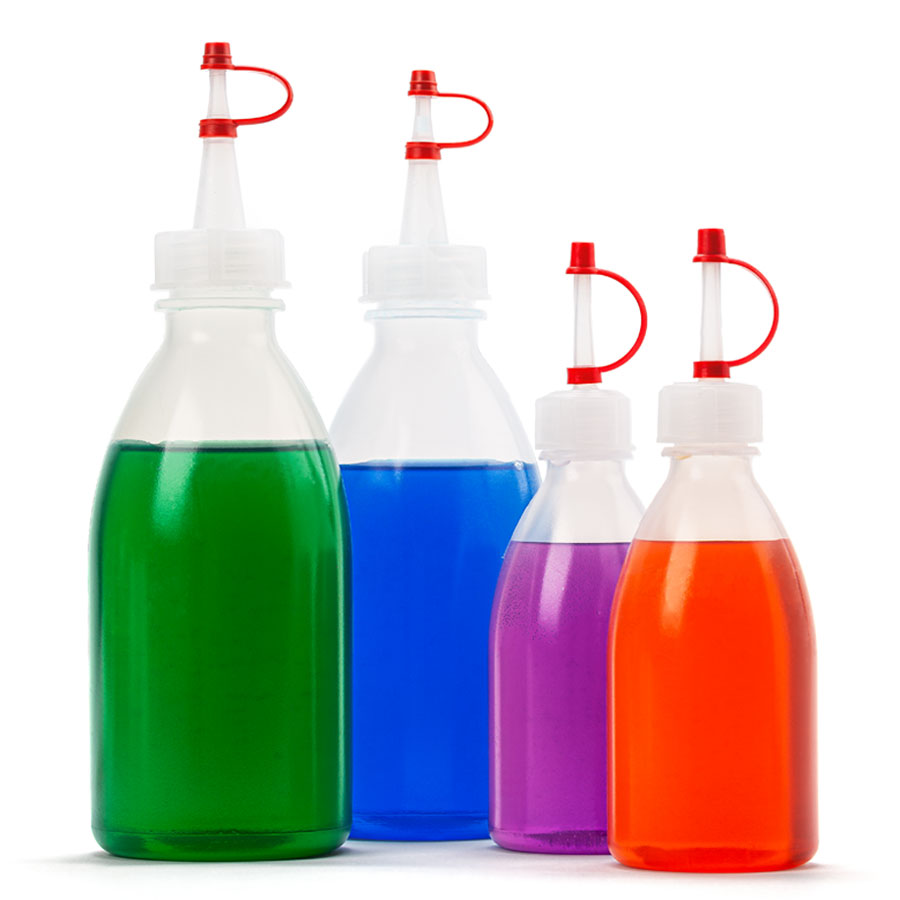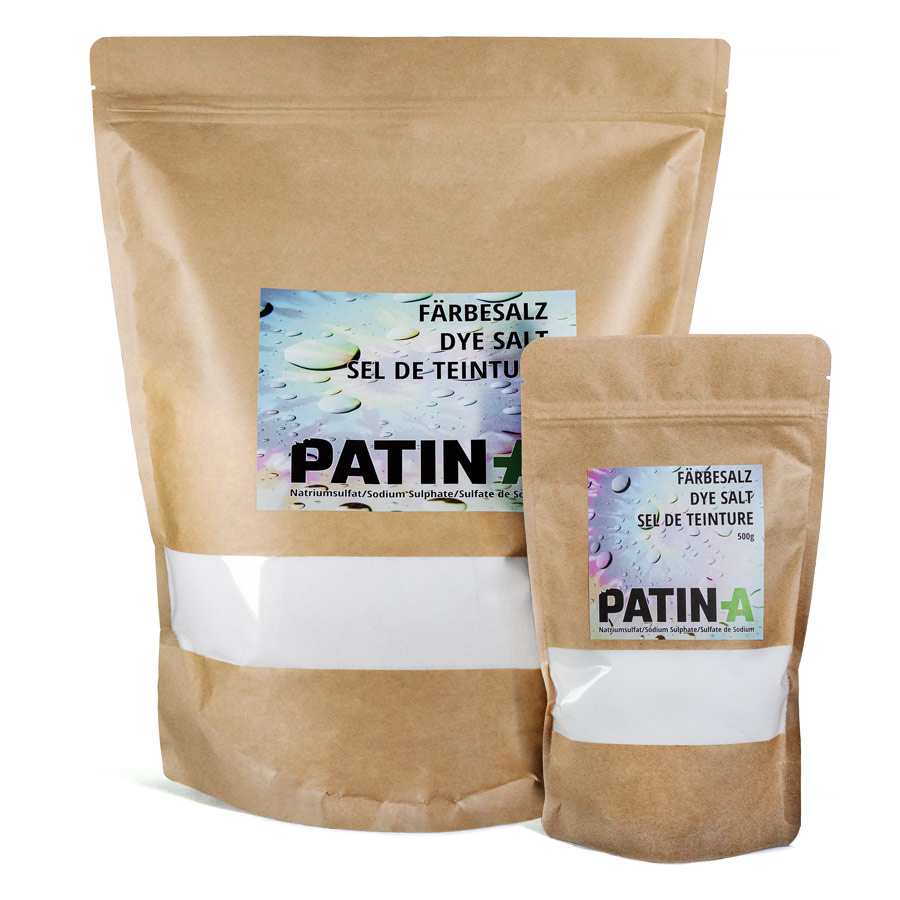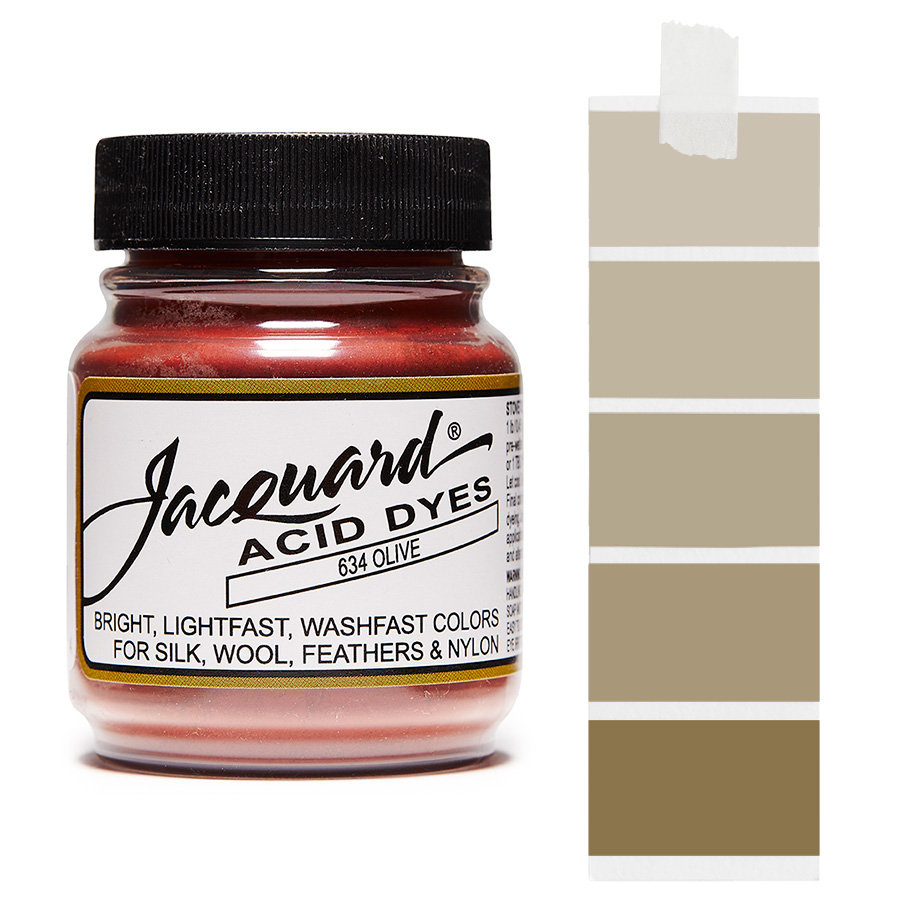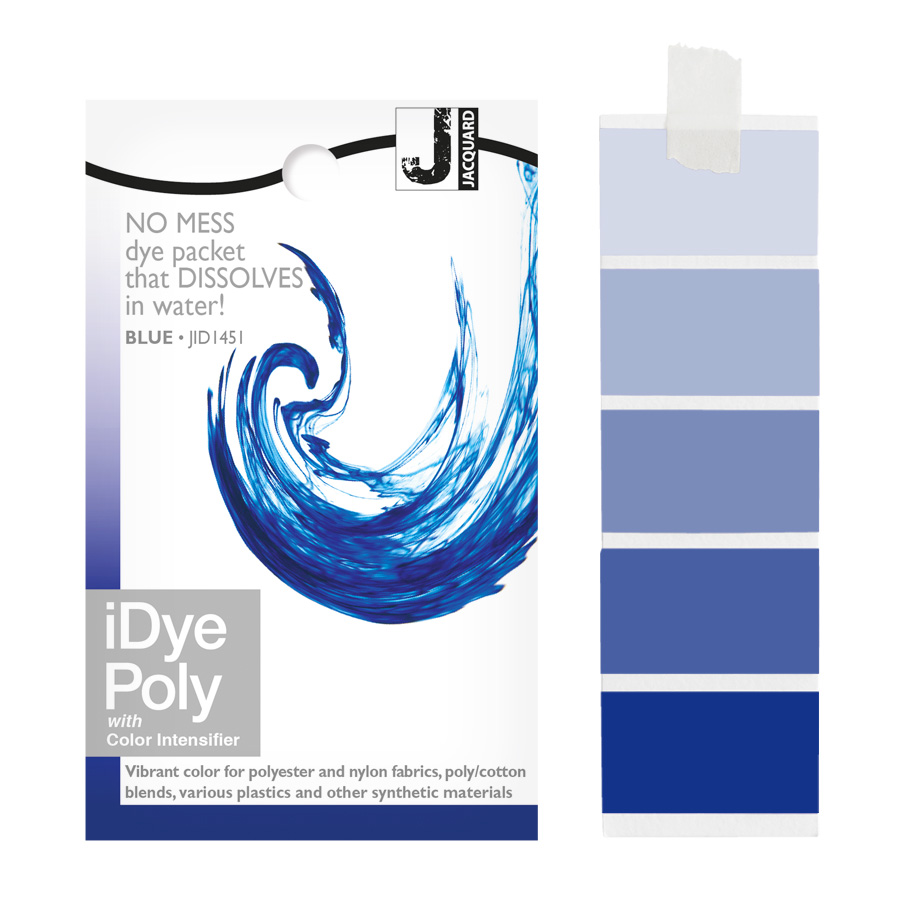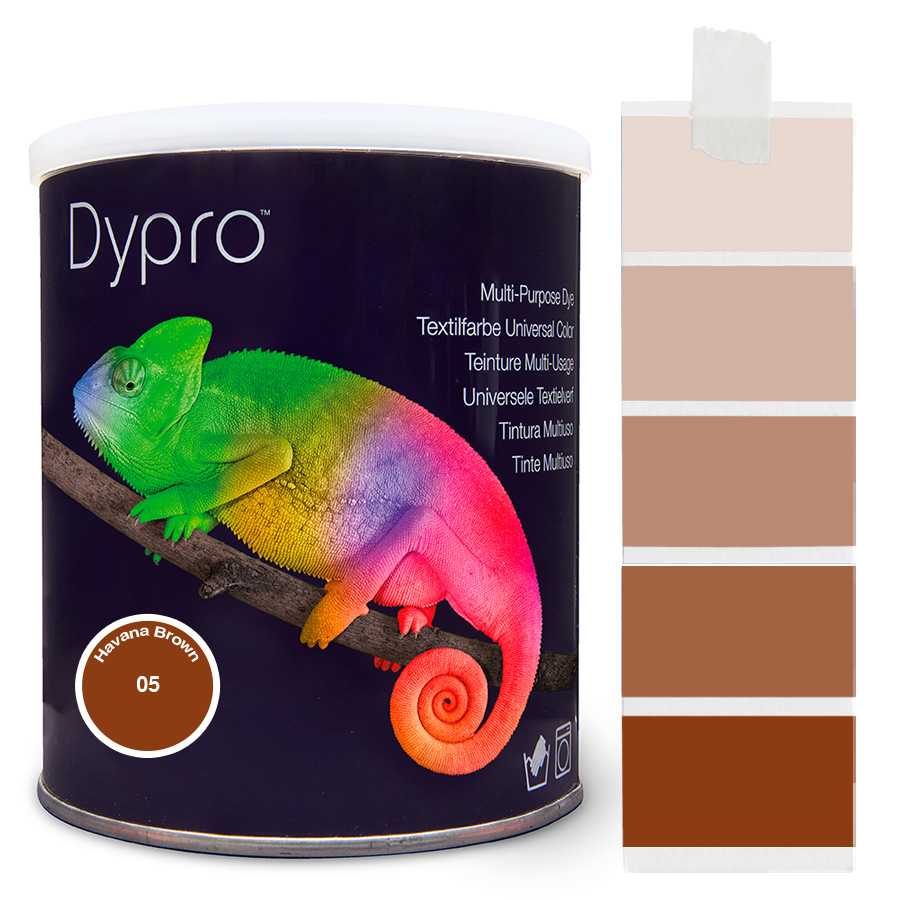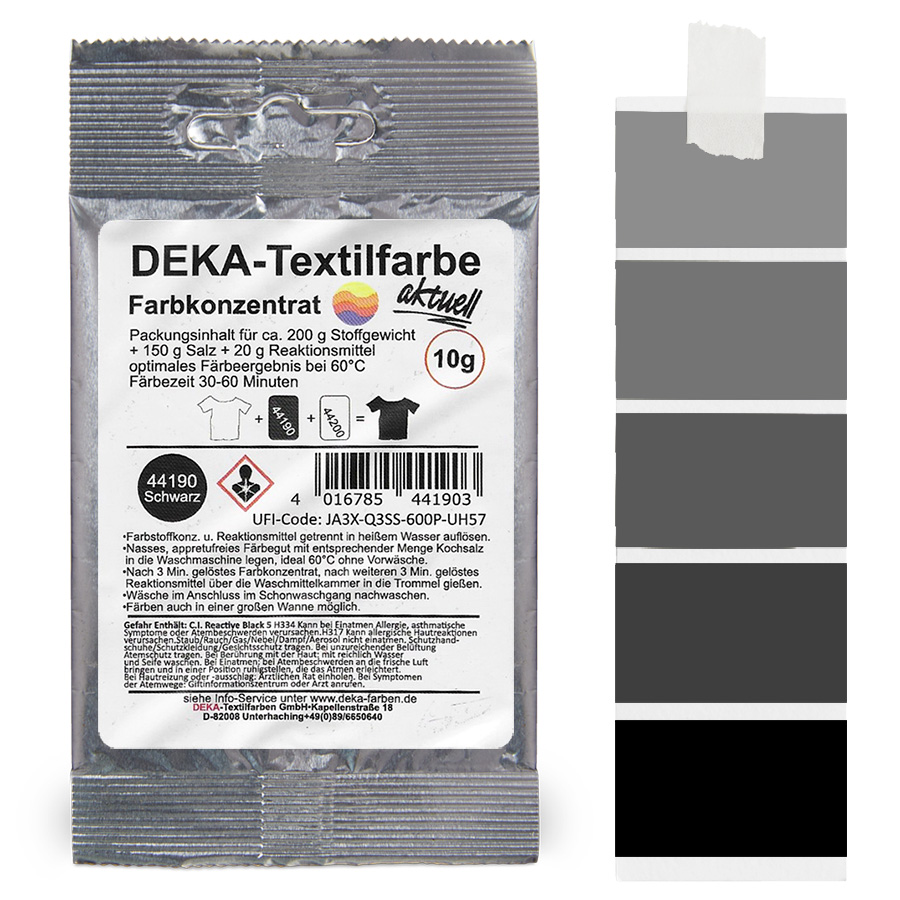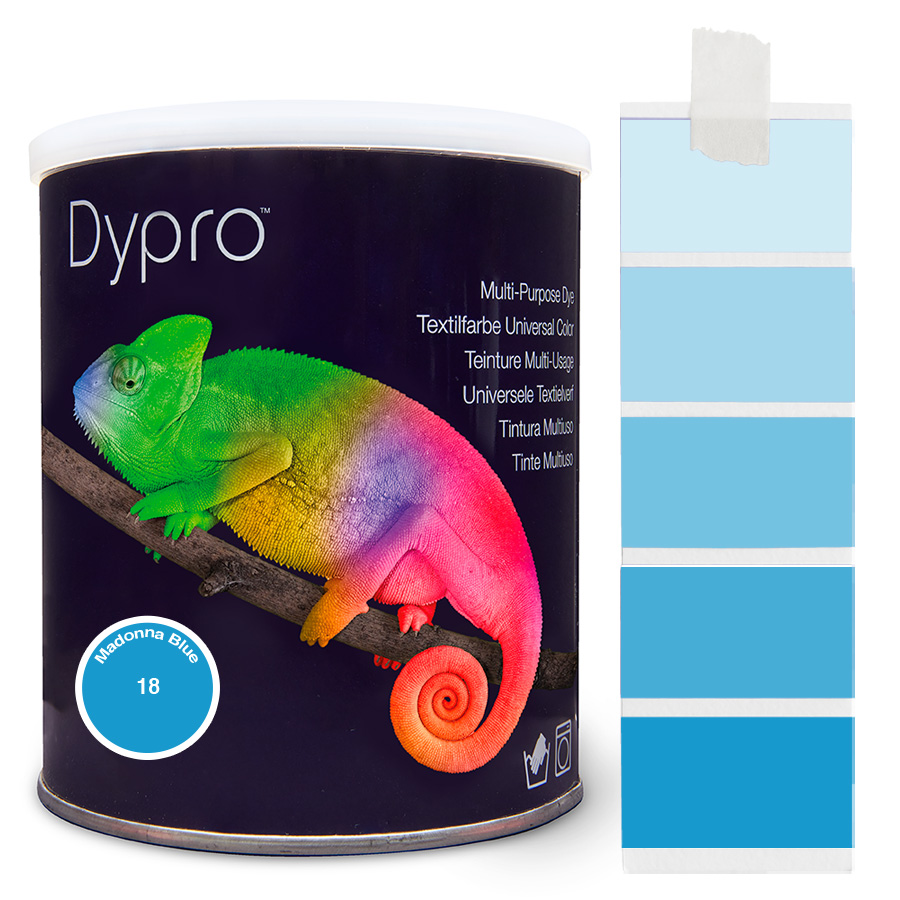Rit Color Remover - Decolouriser
Decolourising fabrics quick and easy
With Rit Color Remover you can remove the original colour from fabrics to prepare them for dyeing.
Look forward to spectacular results and real colours!
Why a colour remover?
Decolourising with Rit Color Remover is also the perfect solution for removing discolourations (through accidental washing with coloured textiles) and even food stains (due to fruit juice, ketchup and tea) from white fabrics.
Unlike traditional bleaches that contain chlorine which may damage the fabric, Color Remover is chlorine-free, so you can safely dye the fabric after removing the colour.
It is perfect for dye projects where you want to change the colour of the fabric completely, or as a pre-treatment for faded, discoloured or stained fabrics.
Rit Color Remover manages even to remove dyes from incorrectly dyed fabric.
Why doesn't my fabric decolourise white?
Only discoloured white fabric becomes white again through decolourisation. Dyed fabrics only become lighter - but never white!
These fabrics, which, after decolourisation with Rit Color Remover, have become lighter (whether yellowish or pinkish) can very easily be dyed into thousands of other colour shades.
In order for a fabric to become white, it has to go through a complex bleaching process - this is not possible with household products!
Please also note:
Color Remover cannot remove patterns or prints from fabrics. It is also not possible to remove the indigo colour from jeans (there is a special decolouriser for this: Rit Fast Fade - Jeans-Lightener).
You will find instructions at this tab: Instructions or here.
Available in household quantity of 57 g or in professional size of 454 g
Content: 57 g or 454 g
Danger warnings:
Use product with care. Always read label and warnings before use. 
CAUTION
Causes severe eye irritation. Wear eye protection.
If medical advice is required, have packaging or identification label ready.
Keep out of the reach of children.
Read label before use.
Avoid release into the environment.
Dispose of content/container according to local regulations.
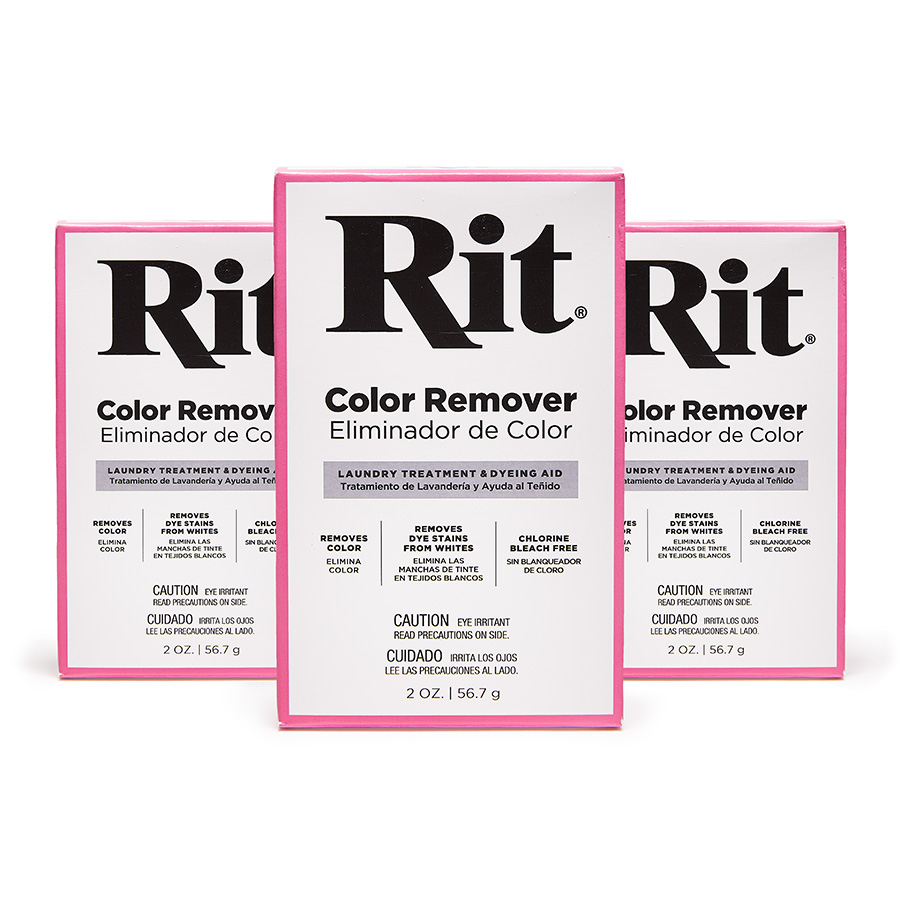
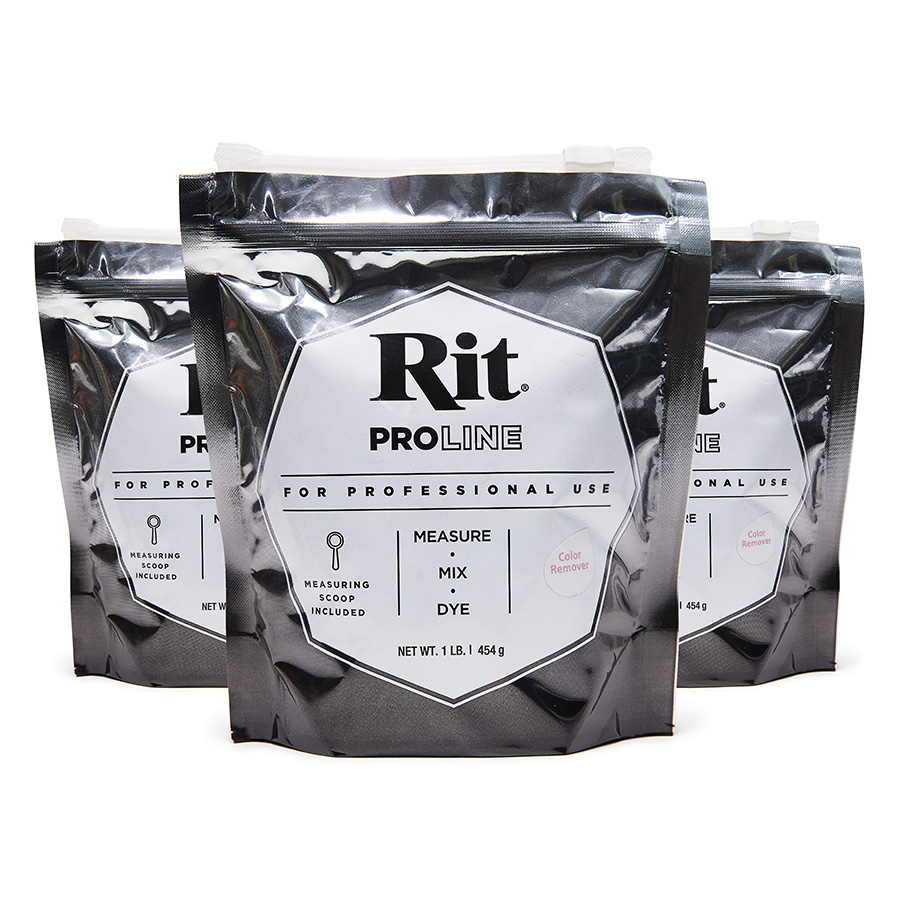
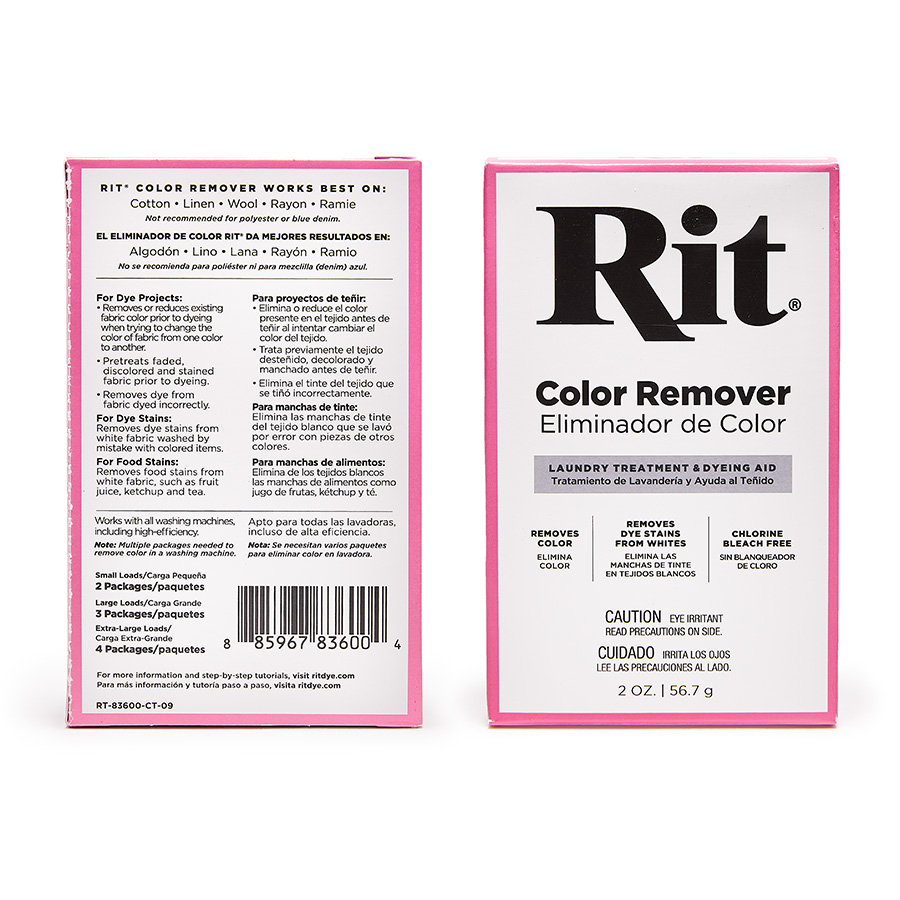
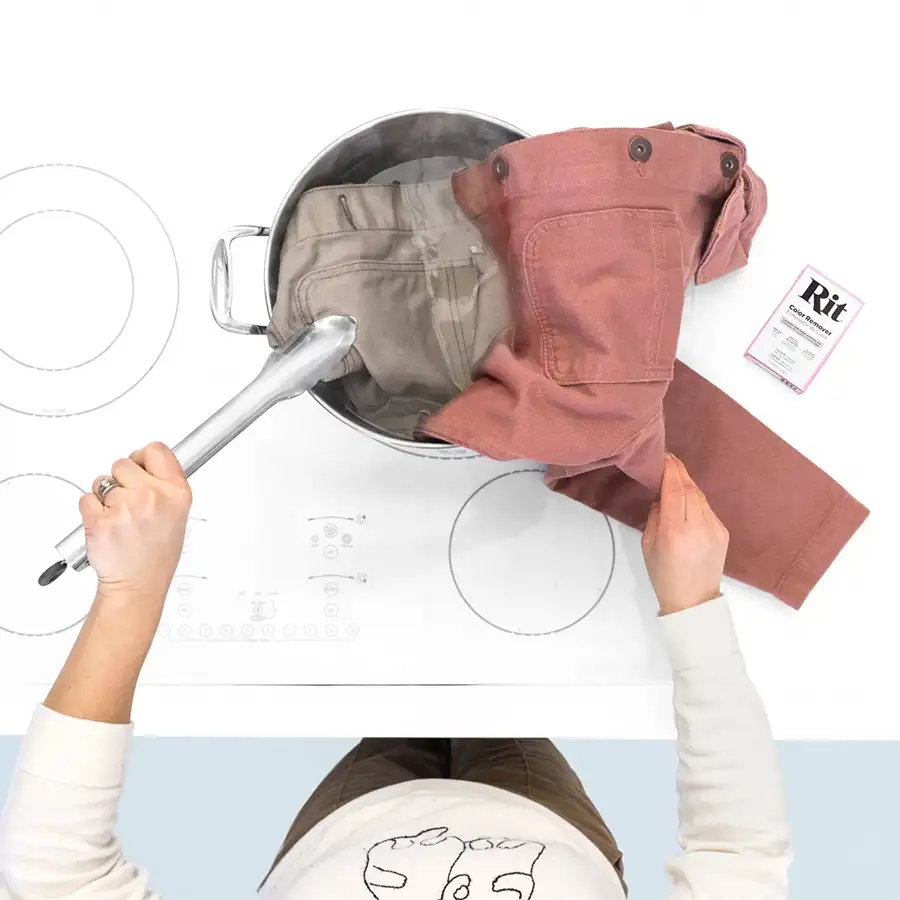
Decolourise with Rit Color Remover
Rit Color Remover is a chlorine free, reductive bleaching agent that does not damage or decompose washable fabrics as is the case with chlorine bleach.
Decolouriser is primarily used to remove or reduce the colour from the fabric before dyeing, creating a blank canvas for dyeing in a true colour.
It is suitable for cotton, linen, silk, wool, ramie and viscose. It may have a limited effect on polyester, depending on how it has been (industrially) dyed.
Unfortunately, Rit Color Remover cannot remove the pattern or print from a fabric nor can it remove the indigo colour from jeans.
For best results we recommend to decolourise in a cooking pot on the stove at an almost boiling temperature.
You can also use Rit Color Remover in the washing machine, washbasin or sink or in a bucket but the results may be less reliable.
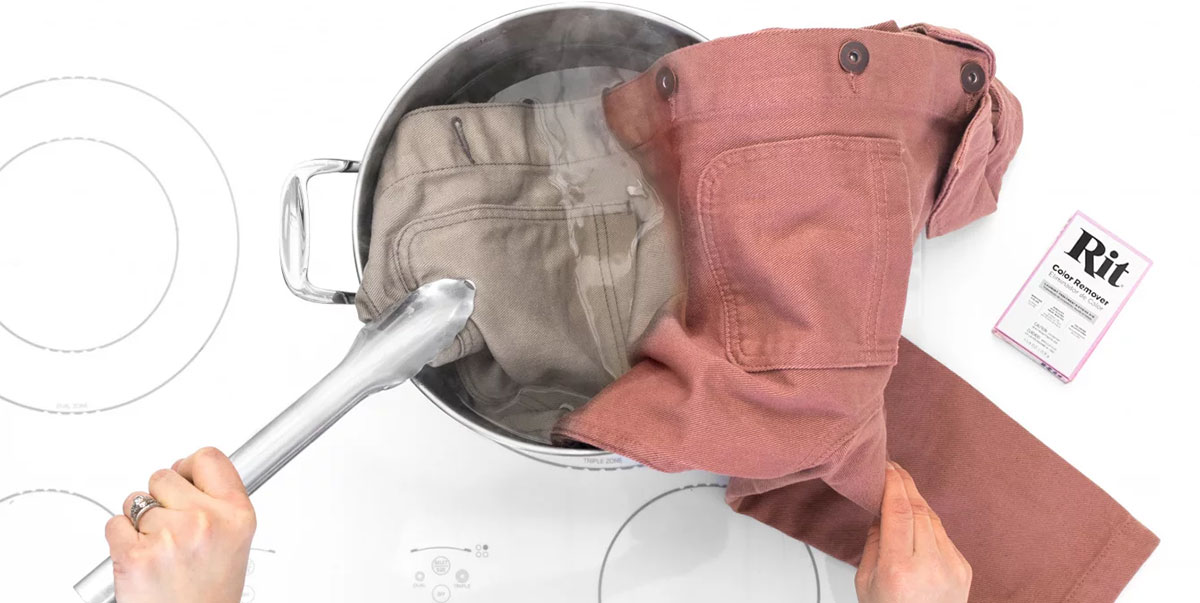
Decolourising on the stove
Use Color Remover in a well ventilated room. Open all windows and turn on a fan if you have one.
Pre-wash the item in warm soapy water.
Fill a stainless steel pot with enough water to allow the fabric to move freely. Cover the pot and heat the water on the stove to just below boiling point (approx. 90 °C).
When the water begins to simmer, add a pack of Rit Color Remover. Stir well.
Let the liquid continue to simmer.
Moisten the item from which you want to remove the colour and put it in the water bath.
Stir occasionally.
Some fabrics lose their colour after only 10 minutes, others need up to 20 minutes. Remove your garment from the bath as soon as it is lighter (some even turn white or off-white).
Rinse the garment in warm water and allow it to cool gradually in slightly colder water until the rinse water is clear.
Wash the garment in warm water with a mild detergent, rinse and dry.
The piece is now ready to be dyed.
Decolourising in a sink or bucket
Use the decolouriser in a well ventilated room. Open all windows and turn on a fan if you have one.
Pre-wash the item in warm soapy water.
Fill a plastic container or a stainless steel sink with enough water to allow the fabric to move freely. The water should ideally be 60 °C or warmer. If the tap water is not hot enough, heat it on the stove and add it to the bath.
Add a pack of Rit Color Remover to the water. Stir well!
Moisten the item from which you want to remove the colour and put it in the bath.
Stir occasionally.
Some fabrics lose their colour after only 10 minutes, others need up to 20 minutes.
Remove your garment from the bath as soon as it is lighter.
Rinse it in cold water.
Wash the garment in warm water with a mild detergent, rinse and dry.
Your garment is now ready to be dyed.
Decolourising in the washing machine (front load)
Please note : We do not recommend this method for extra large or several pieces.
Moisten the fabric and put the garment(s) in the washing machine.
Set the wash temperature to the hottest setting and on a wash cycle of at least 30 minutes or longer.
• If you want to decolourise a small amount of laundry, use 2 packs of decolouriser.
• If you want to remove colour from a large wash, use 3 packs of decolouriser.
• If you want to decolourise a really large amount of laundry, use 4 packs of decolouriser.
Start the wash and let the machine run for about 10 minutes (the water temperature should heat up).
Meanwhile, dissolve Rit Color Remover in 1 litre of hot water.
If there is a compartment for liquid detergents in your washing powder compartment, remove it.
Pour the solution carefully in the washing powder compartment.
Rinse the washing powder compartment with one litre of hot water.
Wash the garment again in warm water with a mild detergent and dry it.
The garment is now ready to be dyed.
To clean the washing machine:
It is usually sufficient to wash old light-coloured towels in the next wash.
Those who are very careful clean the machine with 500 ml liquid bleach on a 90 degrees wash cycle with 3 to 4 old towels.
We wish you good luck!
Rit-Dye FAQs and troubleshooting
Questions about dyes
Can coloured or printed fabrics be dyed?
• Yes, coloured and printed fabrics can be dyed. This method is called over-dyeing.
• If the garment to be dyed is a light solid colour and you want to dye it a darker colour, we recommend that you follow the standard instructions for using Rit All-Purpose Dye (for dyeing cotton, linen, silk, wool, nylon, ramie or rayon) or Rit DyeMore (for dyeing garments with more than 35% polyester, acrylic or acetate). If you intend to (a) dye a dark plain garment to a lighter colour or (b) change the colour of a garment from one plain colour to another (e.g. from purple to blue), follow our instructions for changing the colour of a garment.
• If you dye a garment with a print or logo, the colour chosen for over-dyeing will mix with the existing colour(s) in the fabric and new colours will be created. In other words, the rules of colour mixing apply. When choosing a colour, think about how it will mix with the colours in the pattern. For example, if you dye an item with a pink flower pattern with a blue dye, the pink flowers will become purple (blue and pink make purple) while the rest of the fabric will become blue. Even if you over-dye the patterned garment with a dark colour, the colour may appear lighter along the patterned area.
Can I change the colour of a garment by over-dyeing it with a new colour?
• If the garment to be dyed is a light colour and you want to dye it darker, we recommend that you follow the standard instructions for using Rit All-Purpose Dye (for dyeing cotton, linen, silk, wool, nylon, ramie or rayon) or Rit DyeMore (for dyeing garments with more than 35% polyester, acrylic or acetate). If you intend to (a) dye a dark garment to a lighter colour or (b) change the colour of a garment completely from one colour to another (e.g. from purple to blue), then follow our instructions for changing the colour of a garment.
Why do I need to add an extra colour when overdyeing another colour with black?
• Our dyes are developed on the premise that they will dye white or light fabrics the same colour as the dye. So when our black or graphite dye is applied to a coloured fabric, the original colour of the fabric may still show through. To avoid this, we recommend adding an additional colour (see our chart here) to balance out the undertones of the existing colour. For example, if you are dyeing a red fabric, we recommend adding some green dye to your dye bath. Since mixing red and green makes black, adding green dye to the dye bath will counteract the red of the fabric.
Can I dye a black garment to white?
• Unfortunately, we do not sell white dye. However, if the garment to be dyed is a natural fabric (e.g. cotton, linen, silk, wool or ramie), then you can remove the black colour with Rit Color Remover. This will give the garment a white or cream colour. Then wash it with Rit Whitener Brightener to lighten the colour. Unfortunately, if your garment contains more than 35% synthetic material (such as polyester, acrylic or acetate), you will not be able to remove or lighten the colour.
Do you have any recipes for Rit colours that are no longer made?
• Yes! You can find them under the "Rit Collections" drop-down menu on our colour formulas page. Select "Vintage Colors".
What special colouring techniques should be used to achieve rich, dark colours like black or navy blue?
• We have a whole page to help you achieve as rich colours as possible. You can find it here. However, the three most important points are (1) use the stovetop method, (2) double the amount of dye, and (3) use Rit ColorStay Dye Fixative after dyeing (but before washing).
Special features of dyeing
How can I reduce dye bleed?
• When dyeing cotton, linen, silk, wool, ramie or rayon, use Rit ColorStay Dye Fixative immediately after dyeing but before rinsing and washing.
• For all other fibres, rinse the fabric in warm to gradually cooler water until the water runs clear.
Can I use your dye or laundry care products in my front-loading washing machine?
• Yes, Rit products can be used in front-loading washing machines.
You can find full instructions here! We do not advise using a front-loading washing machine to dye particularly large items or multiple items.
How do I get an even colour?
• To get an even colour, the dye bath must be large enough for the fabric to flow freely when stirred. If the fabric is too clumped, stains or light and dark areas may appear. If you stir the fabric constantly while dyeing, the dye will be evenly distributed.
How can I test the colour of the dye?
• When using Rit All Purpose Dye, the most realistic way is to use a piece of fabric from the garment you want to dye. However, you can also test the colour by dipping a paper towel into the dye bath. The paper towel is made of fibres that react to the dye in a similar way to cotton.
• If you are using Rit DyeMore Synthetic Dye, we recommend that you first heat the dye bath on the cooker to almost boiling point. The most realistic test would be to use a piece of fabric from the garment to be dyed and leave it in the dye bath for 5 minutes. If no scrap fabric is available, use a swatch that has a similar fibre composition to the garment (if available). Due to the complexity of dyeing synthetic fabrics, you cannot get an accurate idea of how the colour will look on your synthetic garment with a paper towel. It's worth a try if you don't have a fabric sample available, but please remember that it won't give you an exact match.
• If the colour is too light, add more dye; if the colour is too dark, add more water. If more dye is needed, add the dye in 1/4 to 1 teaspoon increments, depending on the recipe or amount of fabric to be dyed. If the colour is too dark, add hot water in 1 to 2 cup increments, depending on the size of the dye bath and the amount of fabric to be dyed.
How do I determine how much dye I need?
• This depends on the weight of the fabric you are dyeing. As a general guideline, one pack of powder dye or 120ml of liquid dye will dye one pound of dry weight fabric (about 2.5m of lightweight fabric or two large adult t-shirts). To get a lighter colour, use less dye. For a darker or lighter colour, double the amount of dye. We recommend at least 1 bottle of Rit All-Purpose Dye or 2 bottles of Rit DyeMore for darker colours. When dyeing 100% polyester, we recommend at least 1 bottle of Rit DyeMore.
• You can estimate the weight of the item or use a food or household scale. Weigh yourself for larger items such as bedding or curtains; then weigh yourself when you hold the item(s) in your hand. The difference is the weight of the item(s).
I just dyed in my washing machine and the fabric came out with uneven colour. What is the reason for this?
• This is generally caused by: (a) a combination of too much fabric and too little water in the washing machine or (b) the fabric has twisted during the dyeing process. We do not advise using a front-loading washing machine to dye particularly large items or multiple items. If you dye in a top-loading washing machine, check the fabric frequently. If it is twisted, stop the machine and turn it up.
• If you are working with cotton, linen, silk, wool or ramie and you don't like the colour, you can remove it with Rit Color Remover. This will turn the fabric white or cream again. Then you can re-dye the garment in another colour!
I want to use your colour formulas with powder colours. What do I have to do?
• You can use our conversion table for liquid and powder dyes at the bottom of this page.
How do I get dye off my hands or skin?
• Our favourite question! The best way is to take a hot shower and use regular bath soap. If you want to make it quick, mix sugar with hand lotion or use a body scrub to take off the colour. If you still have some paint on your hands and want to remove it immediately, you can apply a cleanser with a brush and some water. A second wash with clean soapy water will ensure that no cleanser remains on the hands and dries out or damages the skin.
What kind of salt should I use?
• For dyeing, we recommend PATIN-A dyeing salt, but any iodine-free table or cooking salt can be used, including kosher or sea salt.
Which container is best for dyeing in the sink or bucket?
• You can either use a plastic container that must not get dirty, a glass container or a stainless steel sink. The container must be large enough for the garments to move freely when dyeing.
• We do not advise dyeing in a porcelain or fibreglass basin. It is important that you clean the container thoroughly after dyeing. It is always best to keep containers for dyeing separate from those for cooking.
If you must use a container that is also used for cooking, it is advisable to clean the container with chlorine bleach or a powdered detergent after dyeing.
There are small stains or spots of colour on my dyed fabric. What happened?
• Colour stains are usually caused by three things:
1. The dye powder was not completely dissolved in water before being put into the dye bath or washing machine;
2. The dye was poured directly onto the fabric instead of being dissolved in water first; or
3. the fabric was not consistently stirred or agitated during the dyeing process.
• If you are working with cotton, linen, silk, wool or ramie and you don't like the colour, you can remove it with Rit Color Remover. It will bring the fabric to a white or cream colour. Then you can re-dye the garment in another colour!
• Unfortunately, Rit Color Remover does not work on synthetic fabrics (such as polyester, acrylic or acetate). However, you can over-dye it with a darker colour.
Should fabrics or garments be washed before dyeing?
• Yes! It does not matter whether it is a new or an old garment. Pre-washing in warm soapy water will remove any coatings that may interfere with dye absorption.
How is dye removed from containers and utensils?
• Use chlorine bleach or a detergent containing bleach such as Comet or Ajax to remove dye left in the washing machine or on mixing containers.
How long should I leave my item or fabric in the dye bath?
• This really depends on the shade you want and the fabric. To achieve the colour on the package or bottle, we recommend 30 to 60 minutes of constant stirring. For lighter shades, we recommend 10 to 20 minutes.
For 100% polyester and polyester blends, it takes at least 30 minutes for the dye to be absorbed into the fabric, even if the fabric has reached the desired shade in a shorter time.
• Nylon tends to dye very quickly and much darker than other fibres, so the actual time needed in the dye bath is much less. Colours always appear darker when wet and dry lighter. Remember this before removing an item from the dye bath.
Why do my dyed curtains fade so quickly?
• If your curtains have been dyed with Rit, direct sunlight can cause the colour to fade more quickly than normal wear and tear. If you dye curtains, it is best to use Rit ColorStay Dye Fixative after dyeing (but before washing) to double the colour.
Can I use Rit Color Remover to bleach wood?
• Rit Color Remover can be used to whiten untreated wood before staining it with lighter Rit colours. This creates a whiter base and the finished colourants look brighter and cleaner. If you have stained a piece of wood and you don't like the colour or you have made a mistake in staining, you can remove the colour by mixing 1 or 2 packets of Rit Colour Remover with 3.5 litres of very hot water (70 degrees). Stir well. Avoid inhaling the fumes. Apply the remover to the wood and leave it to work for one to two hours. Rinse well with warm water and allow to air dry. Then stain the wood with a new colour.
Can Rit be used in containers intended for food?
• Rit is not a food-safe dye, so we do not advise using a container that is also used for food. However, if you need to reuse the container for cooking, we recommend cleaning it with chlorine bleach or a powdered detergent after dyeing.
What can I do if I don't like the colour of my fabric after dyeing?
• If you are working with cotton, linen, silk, wool or ramie and you don't like the colour, you can remove it with Rit Color Remover. This will turn the fabric white or cream again. Then you can re-dye the garment in another colour!
• Unfortunately, Rit Color Remover does not work on synthetic fabrics (such as polyester, acrylic or acetate). However, you could over-dye it with a darker colour.
Which vessel is best for stove-top dyeing?
• We recommend using a stainless steel or enamel pot. Aluminium pots can also be used, but the aluminium can be scratched and pitted by the salt in the paint, so in this case it is best to use an old pot that you no longer like. It is always best to keep the vessels for colouring separate from those for cooking. If you have to use a vessel that is also used for cooking, it is advisable to clean the vessel with chlorine bleach or a powdered detergent after dyeing.
What temperature should the water for the dye bath be?
• What a good question!
Rit loves hot water because it loosens the fibres in the fabric to absorb the dye.
We recommend using the hottest water suitable for your fabric. However, if you want specific temperatures, here they are:
• If you are dyeing natural fabrics (such as cotton, linen, silk or wool), use Rit All-Purpose Dye at 60 to 71°C. If the tap water is not hot enough, heat the water on the cooker and add it to the dye bath.
• If you are dyeing a material that contains more than 35% synthetic material (such as polyester, acrylic or acetate), use Rit DyeMore for Synthetics at 82° to 104°C. To do this, you must use the dyeing method on the cooker.
Why didn't Rit Color Remover remove the colour in my curtains?
• Since curtains are often exposed to direct sunlight, some manufacturers use stronger colourfast dyes and fabric finishes. These dyes are very difficult to remove even with chlorine bleach.
Will Rit stain my washing machine? What's the best way to remove dye from your washing basket?
• If you've never used dye in a washing machine, we understand why you're nervous! Who wants a purple washing machine anyway?
Well, maybe we do. However, we can promise you that Rit will not leave any permanent stains on the metal parts of your machine.
Rit has been used in washing machines for decades, ever since the invention of the electric washing machine in the 1950s. We have coined the phrase "Push Button Color!".
However, we recommend that you wash everything off immediately after dyeing to ensure that no plastic parts of your washing machine get dirty.
Wipe off all dirty parts of the washing machine with a detergent immediately, possibly with a bleach (chlorine bleach).
Remove the detergent container (drawer) and clean it carefully.
To be on the safe side, Rit recommends: add detergent with 500 ml of chlorine bleach and do a full wash cycle with 3 old towels.
P.S: Normally, two wash cycles of dark laundry are enough. Chlorine bleach is common in the US and recommended for almost everything. Environmentally, however, it is definitely not up to date!
Login
July 20, 2023 11:19
Entfärben von Feinstrumpfhosen
Ich suchte schon seit fast einen Jahrzehnt nach einen Entfärber für Feinstrumpfhosen zur Selbstgestaltung dieser mit den tollen Rit Synthetik Farben. Und ich war total happy mit Rit Remover einen gefunden zu haben. Das Ergebniss ist ein sehr sehr helles Gelb. Wichtiger Hinweis entfärbt nur die braunen Strumpfhosen, nicht die schwarzen. Kann es nur empfehlen Wirklich.
 We ship worldwide
We ship worldwide Top customer satisfaction!
Top customer satisfaction! Many payment options
Many payment options
